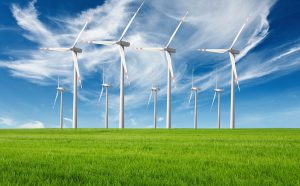Over the past few weeks, we have been talking about how climate change is expected to affect our farmers based on our current understanding of what the future climate across the country will be. We started by looking at some of the biggest challenges farmers are expected to face because of the changing climate and its effect on regional weather patterns. The three primary challenges these future farmers will face are increasing average temperatures, decreasing annual precipitation, and a shift in pest distribution. By looking at the results of four common climate change models, we are able to establish a kind of future forecast for the farming industry.
While it is interesting to understand how climate change may affect our farms and food supply, the real benefit in being able to look ahead at that future forecast is in using it to measure the effectiveness of specific adaptations. This is exactly what a recent study from the Economic Research Service(ERS), a department within the United States Department of Agriculture (USDA), sought to do. That study used the models described in the last post and the understanding of how climate change will affect farming from the first part of this series to probe some “what if” scenarios.
To understand the ramifications of specific adaptive practices, the study used crop-growth models to project future crop yield with the predicted changes to climate, weather, and other environmental aspects factored in. Then, possible adaptations were simulated to see how changes in farm practices might mitigate the predicted changes in climate. This allowed the team conducting the study to gauge the effectiveness of certain adaptive techniques across the different models. This analysis looked at adaptations like shifting crop acreage, changing tillage practices, introducing drought-resistant crops, and using different crop rotations as potential ways to manage the forecasted changes in weather.
The results of the study were promising, indicating that the loss in crop yield expected as a result of increasing temperatures and decreasing precipitation in much of the country could be mitigated through the adoption of adaptive practices. In addition, advances in technology and changes to public policy are expected to help farmers and ranchers adapt to the changing climate in ways that will further limit the negative consequences to our agriculture industry and food supply.
However, this does not mean that farming will continue in the same locations and with the same crops as now. One of the ways in which climate change may change the face of farming is by changing where food is grown. While some regions will continue to provide the kind of climate needed to produce large crop yields, some parts of the country where food is grown today may become too hot and dry to be hospitable to farming. But even as we lose some arable land, we are expected to gain land in other regions that was previously too cold to produce high yields. This shifting is one of the ways that the industry will have to adapt to the changing climate.
Related articles
- How Climate Change is Affecting Our Farmers – The Challenges (fillyourplate.org)
- 6 Ways to Fit Organic Into Your Budget (fillyourplate.org)
- 9 Ways to Help Protect Heart Health (fillyourplate.org)


